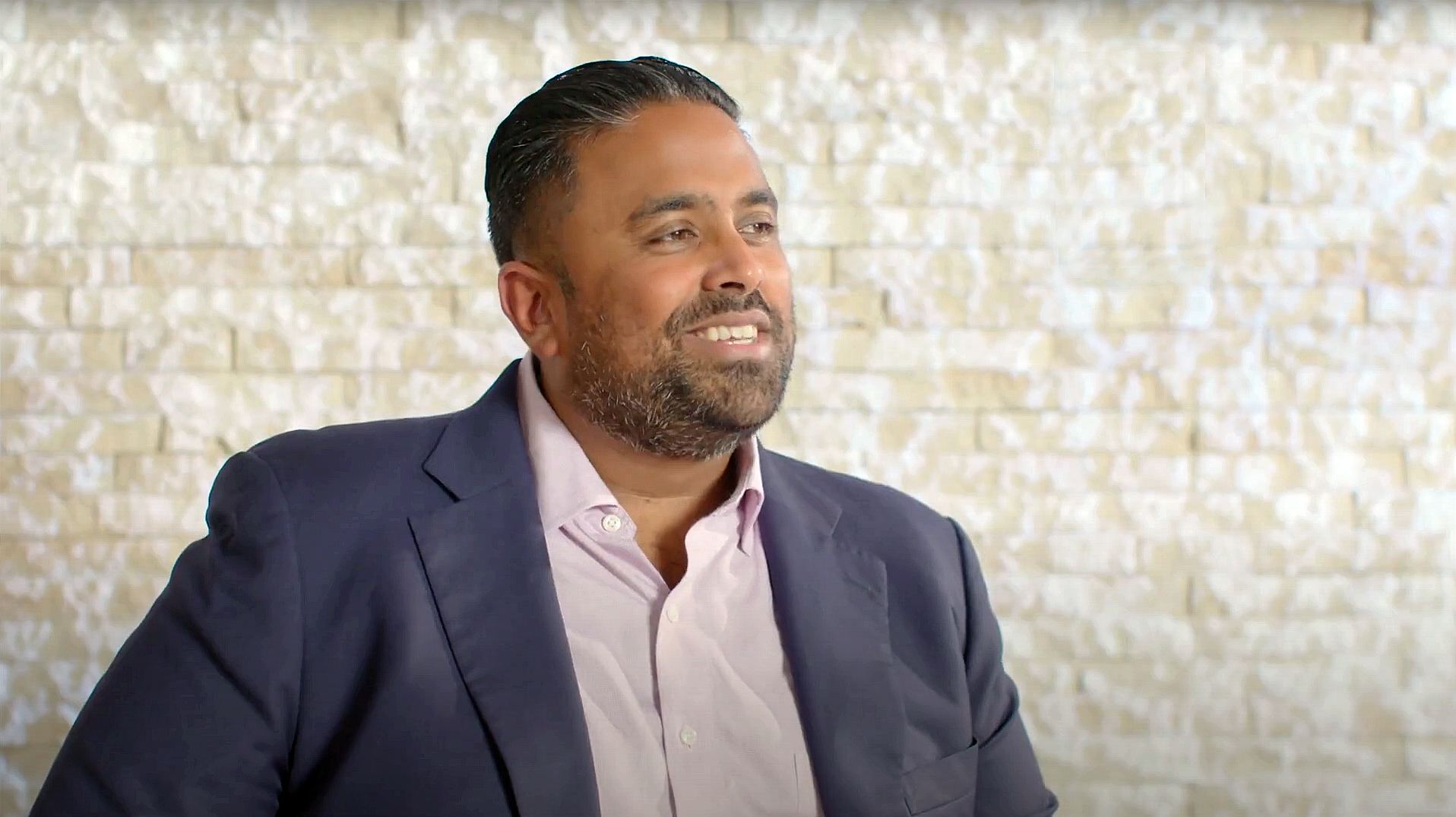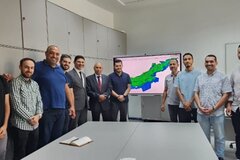Digital has never been more important for the industry. As incumbents navigate a historic sector downturn amid the unfolding of the COVID-19 crisis, companies are turning towards digital as a critical lever to finding new ways of working, responding to customer demands for increased efficiency, and lowering BOE (barrel of oil equivalent) costs. Vice President of the Baker Hughes Oilfield Services (OFS) digital organization, Shan Jegatheeswaran talks about addressing these needs by working with business units and customers on technical innovation in service delivery efficiency, remote operations, automation, and advanced analytics (machine learning / AI capabilities).
What is the state of upstream digital today?
Despite inventing some of the world’s most advanced technology, upstream players continue to face challenges to integrate and operationalize data at scale. Over the next 18-24 months, digital will divide the world into the “data haves” and the “data have-nots”.
I see four key factors on how digital helps the enterprise agenda:
- Resilience - Digital helps find efficient ways to improve margins and competitiveness against oil price volatility. We’re constantly working with our field teams and data scientists to uncover better ways of planning, executing, and using advanced analytics for real-time decision making. This is core to my team’s value proposition.
- Relevance - Digital savviness combined with over a century of domain expertise is a defensible competitive advantage for Baker Hughes. Our employees work where our customers work – shoulder to shoulder – in some of the world’s harshest conditions. Not many companies can claim that. We stay relevant and competitive if we’re great at taking our field operations wisdom and converting it into bits and bytes.
- Legacy - Digital helps deal with new challenges like addressing environmental, social, and governance (ESG) concerns. Efficiency from digital transformation makes hydrocarbons safer, cleaner, and less wasteful. The legacy we leave behind with actions we take today, is a compelling proposition for someone looking to make their mark on the world. We have enough software engineers looking for the next Uber, I’d argue that the mission in digital within upstream is compelling. An amazing opportunity for new talent to join us and make a personal impact on one of the largest issues of our time.
- Innovation - Digital and data foundations will be the catalysts for our innovation and growth. Strategies around automation, remote operations, and energy transition center around one core theme – data. We must reframe and rethink our approach to digital and data – actively learning from other industries that are ahead in this journey. There are no sacred cows on this transformational trip.

What are you doing with the team to bring the four key factors to life?
We started with a zero-based approach to our people structure, our software portfolio, and our software development process. These are fundamental ingredients to get right.
From a people perspective, we’ve created a single, cohesive global digital organization. This unlocks our ability to optimize our talent management and drive focus on our priorities. We have also created disciplines around data curation and data streaming. The way I think about how we build software is that it should center around our ability to capture, contextualize, and operationalize our data. Curate, stream, act. All three elements are important to the final user experience.
Why is data curation, data streaming, and acting on data so important now?
Data has always been important for the upstream oil and gas industry. Many of us will recognize the often-quoted headline “data is the new oil”. Well, the fact is that we’ve been in both industries for over a century. One doesn’t exist in the upstream market without capabilities in big data management and analysis – core activities such as subsurface structural modeling, well planning and construction, and real-time optimization and monitoring – are data and technology heavy.
The issue is that this data has often been kept in silos across the organization and fragmented across different systems with limited capabilities in common data models or data standards. Our challenge becomes the curation and streaming of raw and unstructured data into refined and contextualized data.
I look at other industries that are on a similar journey and draw analogies and lessons. The healthcare, financial services, entertainment, hospitality, and transportation industries are facing the same challenges as us. We’ve all got to cleanse, standardize, catalogue and deliver relevant data through specific digital use cases to targeted end users – and wrap this whole thing in a secure, simple, and scalable framework. The cross-industry principles are almost identical – Netflix (as an example) wants to serve up relevant and timely content for consumption by its users. I’d like to serve up relevant and timely content for consumption for my users as well. The nature of our content is, of course different, yet the principles around data curation, data streaming, user experience, security, workflow simplicity, etc. are similar.

What customer and employee benefits do you foresee as a result of digital transformation in the upstream oil and gas sector?
It is undoubtedly a tough time for the sector. We’re facing environmental, economic, and pandemic pressure – it is existential in many ways. An exciting and poignant time for courageous decisions, measured bets, and disciplined execution.
With customers, I see better collaboration and partnership. Digital is a large unknown and very difficult to navigate alone. Our efforts in Automation and Remote Operations are testaments to some of the benefits we’re already seeing. In 1Q20, we delivered 60% of our global drilling services jobs remotely – we’ve moved past the phase of “proof of concept” and are now executing at scale.
In the future, I see customers looking for a smart and open ecosystem versus a closed and proprietary platform play. Like us, companies are setting up their own digital factories, capable of developing complex, enterprise solutions on their own. To support this trend, we’ll infuse modularity and interoperability into our future development. Whether it is aligning to industry standards like Open Subsurface Data Universe (OSDU) and Wellsite information transfer standard markup language (WITSML) data formats or building components that can interact with customer tech stacks – we want to be able to provide options.
The automobile industry is an example of where OEMs invested in proprietary platforms but are now realizing that there is value in interoperability and integration. Why develop an OEM mapping application? Doesn’t everyone use Waze or Google Maps anyway? Why pour R&D dollars into an OEM music application when Apple Music, Spotify, or Pandora can be connected to your car’s system?
We believe that the ball is headed towards interoperability in the upstream digital space and we’re forming our thinking and planning around that. The journey isn’t going to be simple or easy, but I believe we’re taking the right steps forward for our customers.
For our employees, there are a few areas of upside, most notably, improvements in our software make their day-to-day tasks simpler and more enjoyable. Our efforts in data integration, design, and change management are already seeing benefits in productivity and we’ll continue this focus. From a talent development and cultural perspective, expansion in digital capabilities opens new career paths that didn’t exist before. For example, we’ll be training a few teams on low-code development and advanced analytics – areas that we see growing in the future. We’re also actively pursuing a “remix” of talent where we bring in non-traditional profiles from outside the industry to complement our software teams – this makes for a more dynamic environment where the status quo is questioned.
Digital transformation is a little like weight loss. The steps to success are well documented and aren’t all that difficult, yet no one can seem to bottle the recipe to do it consistently and at scale. I believe that the differentiator is about focusing on the right fundamentals and then out-executing everyone else – that’s my organization’s commitment to customers and employees. We’re excited to be on this mission.
Energy Forward Stories
Sign up to stay up to date on the latest innovations and people shaping the future of our industry.



